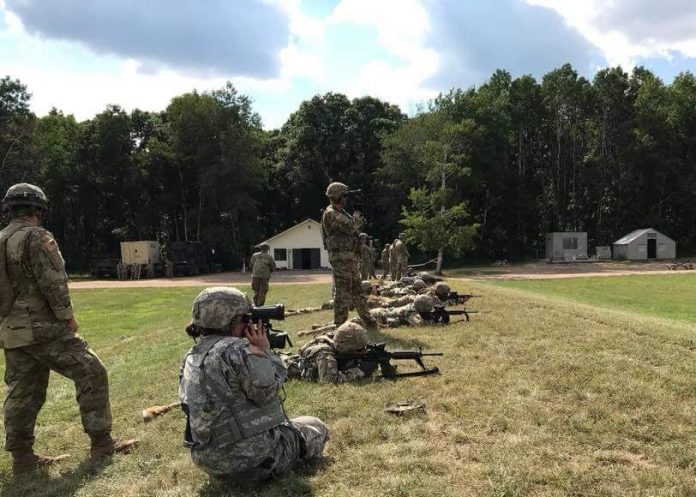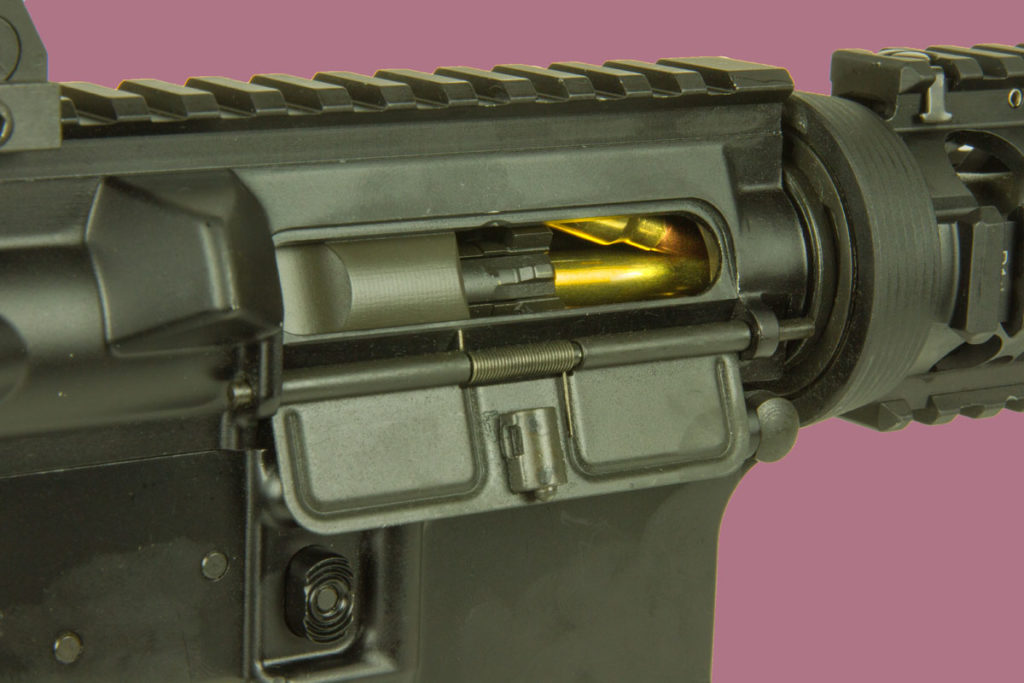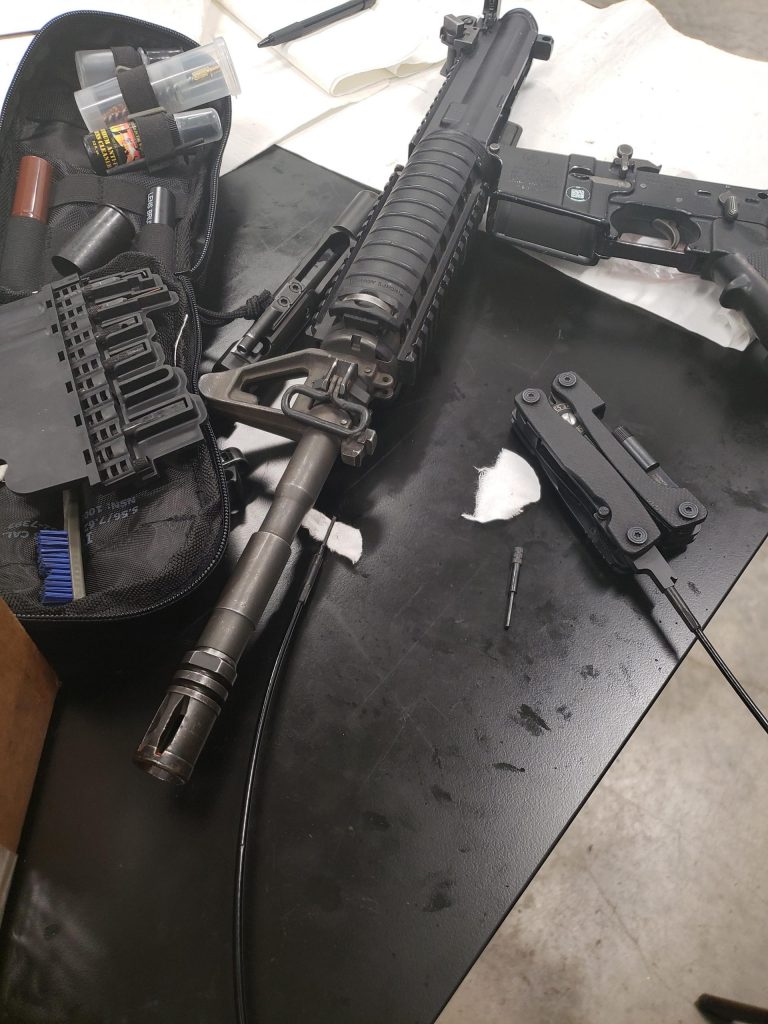
I recently read an article on an Army Publication Resource called PS Magazine that, while it had good intent, it was executed poorly.
Many articles that are geared towards the military try to simplify things, this is due to trying to reach a massive (literally millions) group of people that may not have the same interests, background, daily job requirements, or time to invest, as the publisher who is putting out. While they don’t have the same interests, the information still needs to be taught and implemented to train the soldier(s). This creates a fine line to walk between putting out good simple info, and putting out overly complicated info that loses your audience, even if accurate.
Note: This is meant for a standard operator that does not have a lot of time on the gun. Some techniques will be changed based on skill level and application.
The Topic: Malfunctions and Loading procedures for a M16/M4 series rifle.
Pretty simple, right?
The article, being written already, shows us (“Big Army”) that simple techniques involving malfunctions and loading procedures are being done incorrectly. Great, let’s fix that problem. However, the article put out oversimplified information and wandered into subjective and incorrect information.
Malfunctions: Misfire
The worst term I see get used, and probably the most detrimental, is the term misfire. I don’t even like using that term because it has having two very different working meanings, an accidental (now more commonly known as negligent) discharge, or a malfunction not allowing the weapon to fire (misfire/failure to fire).
They both mean completely different things, yet misfire is often used to convey both. Clarity is paramount, it’s why we don’t say “Repeat” on the radio, since that is a fire command.
Note: Malfunctions are seen MUCH differently from safety standpoints depending on if a round was confirmed fired or not.
Second Note: This is why the term stoppage is emerging more and more but in practice and in “Big Army” the general term is still malfunction, and malfunction clearance.
Malfunction: Bolt Override
This is another one I recently saw talked about. Yet it was referred to as “an on top of the bolt jam”. Have some faith in these Soldiers to have an above 6th grade level reading vocabulary and call it what it is, a bolt override.
They will find it much faster in the google machine when they do finally want to learn about how to clear it. They can also describe it more easily to the person there to remedy it if said Soldier never learned more to the malfunction than an “on top of the bolt jam”.
They aren’t the nightmare people believe, see the video below.

Proper Loading Procedures
Ah, a super simple technique yet we are still screwing it up.
Bolt Placement
This is all mission/situation dictated, adjust for what you’re actually doing, but for now I’m referring to an empty gun.
I always say, “Let the gun work as a gun.” “Let it do the work for you.”
If you are loading with the bolt closed, bringing the charging handle back, and letting it go forward to feed a round, you’re not letting the gun work for you like it can. There are a lot of moving parts on weapons, they’re good at their jobs if you let them be.
Bolt Carrier Groups need to go far enough back to clear that round, sometimes operator error doesn’t bring that bolt back enough to do that. The bolt also needs to properly lock into the chamber by going forward with enough force. If it doesn’t have the buffer and recoil spring loaded/compressed to help it do that, it may not lock properly.
Good technique when running an empty gun is to let the gun work for you. Lock the bolt to the rear/open, insert the magazine, push and pull to ensure the magazine is properly seated, and let the bolt go forward.
Note: Don’t slam in a magazine on an open bolt! There is no need to. It will insert and lock without effort, pulling will ensure its in place
So how do we ensure that a round is actually chambered? Ah, the next misconception.
Press checks
Press checks are great if applied correctly and safely. More often than not though, they are not done correctly.
I try to teach Soldiers what press checks are, just in case the question comes up, or if someone is doing it incorrectly. However, I don’t teach them to do it. Instead I teach them to do magazine checks. I, personally, learned this from a Soldier in a Special Forces Group unit but most rifle and carbine instructors will advocate it. If they don’t, it’s a sign to look elsewhere for more instruction.
To ensure that a round is properly chambered, look to see what side your last round is in the magazine, left or right. After properly loading (see above), remove the magazine, verify that the next round is on the other side than last seen. If it is, a round has been stripped and is chambered.
Why/why not Press Checks?
With rifles, cleanliness, parts life, and operator skill dependant, it can cause malfunctions. Sometimes as drastic a concern as headspace, which is a safety hazard.
On the M16/M4’s, the bolt needs to rotate and lock into the chamber. If that bolt doesn’t get pushed hard enough and all the way forward, it will not lock. Thus not allowing the weapon to fire. After a press check (which again, you don’t need to do), you can use the forward assist. It is placed to grip and push the serrations on the carrier and push the bolt into battery. Reminder: this doesn’t mean you use the forward assist for any malfunction, it can cause added harm. There is a reason the round didn’t go into the chamber, smashing it is probably a bad idea.

Lubrication
In order for the gun to help you out, you need to help it out, with what? CLP!! Do a light coat on a stripped bolt carrier group. Also put some on the points of contact inside the lower receiver. AKA hammer and disconnects. This will let the gun move with ease and function the way it should. Add on: it also helps with cleaning later.
For cleaning I use both the Otis Cleaning Kit and Multitasker Series 3X.
The Organization
No matter who the publisher is, an operator of the weapon, an officer, an admin NCO, when information is being put out to an organization as important as the United States Army, or ANYONE operating a weapon, the info must be correct.
This is not me bashing the organization, it is an organization that I respect and still belong to. Soldiers deserve good information, their lives literally depend upon it. We don’t have to church it up, so get a technique to be understood and correct information put out. We are trying to get Soldiers to understand the idea. If they want to learn more about it give them the tools to find that information.
Editor’s Addendum
One of the single greatest frustrations of my military career (not Stephanie’s, this is Keith‘s soapbox now and I won’t speak for her, but her article here is on just such an occurrence) was the attitude on the part of senior personnel that Authority equated to Expertise.
It. Does. Not.
And the most unfortunate thing about that is it is incumbent upon that senior person to recognize where there expertise ends and where they must exercise their authority to bring in experts for the benefit of their troops. It might be expedient for a company commander to task a senior enlisted with readiness of troops for individual weapons qualification, but that does not make that CO or SNCO a subject matter expert in the field they must now deliver readiness in.
But, for the sake of expediency, they sacrifice the individual soldiers. They find the ‘gun nut’ or the soldier who ‘qualified expert’ and, regardless of their background, shoehorn them into being the SME with whatever half complete knowledge base they possess. Or the SNCO dusts off an old faded TM and just opens it up and brokenly reads it verbatim or powers up the old powerpoint presentation.
This leaves soldiers with one overwhelming conclusion, their chain of command doesn’t give a fuck about if they can use their M4. It isn’t a tool to save their life, it’s just one more check in the box that doesn’t matter. But you better get to the 6th SHARP brief and do your SSD level whatever if the .gov system for the course is working worth a damn.
There is no expectation, especially outside combat arms, that soldiers know what they are doing. There is no real emphasis that it matters and it shows from the top down because it is always the task that gets pushed and gets the least emphasis. Most soldiers can’t soldier, despite the job they are paid to do or paid a smaller amount to be ready to do they need to be ‘worked up’ back into basic soldiers because CoC’s don’t put priority on it or resources towards it in a way to prove that it matters.
This is now a deeply ingrained problem that the few actual SME’s and switched on seniors are fighting against. But in so many cases, the seniors are buried under a mound of other shit they have to do. So shooting, the most basic fundamental task of a soldier, is not a priority and senior attitudes prove it.
So the rocker heavy, the warrants, and the officers who want to see improvements in this space must check their seniority.. they must check their authority and supplement expertise. Either by seeking that clear expertise themselves with a deep understanding they can pass on to their soldiers or the more difficult task of putting in the ground work and finding someone who can. If CoC’s keep taking the expedient route, troops will continue to get the message that this doesn’t matter.



